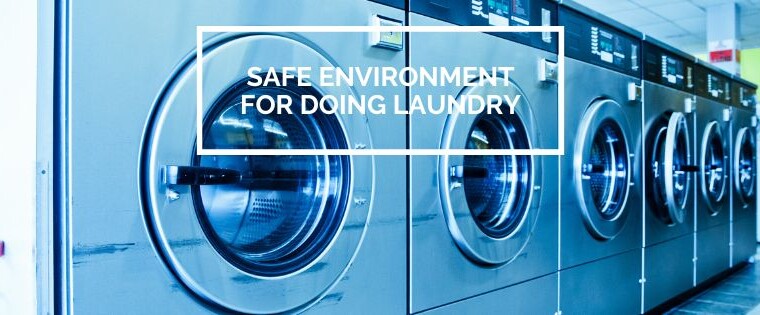Dry cleaning is a popular method for cleaning delicate fabrics that cannot withstand traditional washing methods. However, the chemicals used in this process have raised concerns regarding their potential health impacts. Understanding the implications of dry cleaning chemicals is crucial for consumers and workers alike.
What Are Dry Cleaning Chemicals?
Dry cleaning is a specialized cleaning method that primarily employs solvents instead of water to remove stains and dirt from fabrics. This process is particularly effective for delicate materials that might be damaged by traditional washing methods.
The most widely used chemical in dry cleaning is perchloroethylene, commonly referred to as “perc.” This volatile organic compound (VOC) is favored for its exceptional ability to dissolve grease, oils, and other stubborn stains, making it a go-to choice for many dry cleaners. However, while perc is effective, it has raised significant health and environmental concerns. Prolonged exposure to perc has been linked to a variety of health issues, including respiratory problems, skin irritation, and even increased cancer risk, prompting regulatory scrutiny and calls for safer alternatives.
In addition to perc, other solvents used in dry cleaning include hydrocarbons, which are derived from petroleum. Hydrocarbon solvents are generally considered less harmful than perc, as they have lower toxicity levels and reduced environmental impact. However, they still pose risks, such as flammability and potential air quality issues.
Moreover, a variety of alternative cleaning agents are being introduced to the market, including bio-based solvents and carbon dioxide cleaning methods. These alternatives aim to reduce the environmental footprint and health risks associated with traditional dry cleaning chemicals. For example, liquid CO2 cleaning uses pressurized carbon dioxide as a solvent, which is less harmful to both human health and the environment.
Understanding the types of chemicals used in dry cleaning is crucial for recognizing their potential risks. Awareness of these substances can inform consumers and workers about the safety measures necessary to minimize exposure and can also drive demand for safer, more sustainable alternatives in the industry. As public concern over chemical safety and environmental impact continues to grow, the dry cleaning industry is evolving, seeking to balance effective cleaning with health and environmental considerations.
Health Effects of Dry Cleaning Chemicals
Short-term Effects
Exposure to dry cleaning chemicals can result in a range of immediate health issues. Common short-term effects include skin irritation, which can manifest as rashes or allergic reactions upon contact with contaminated fabrics. Additionally, individuals may experience headaches and dizziness after inhaling vapors from the solvents used in the cleaning process. Respiratory problems, such as coughing or difficulty breathing, can also arise, particularly in poorly ventilated areas where these chemicals are used. Those who work in dry cleaning facilities are at a higher risk of experiencing these effects due to their frequent exposure to the chemicals, which can lead to both acute symptoms and discomfort.
Long-term Effects
The long-term consequences of exposure to dry cleaning chemicals, particularly perchloroethylene (perc), are of significant concern. Prolonged exposure has been associated with serious health issues, including an increased risk of various cancers, notably those affecting the lungs and bladder. Additionally, studies have indicated potential liver and kidney damage as a result of chronic exposure to these solvents. Neurological effects, such as cognitive decline and mood disorders, have also been reported in individuals exposed to high levels of perc over extended periods. The International Agency for Research on Cancer (IARC) classifies perc as a probable human carcinogen, emphasizing the importance of taking precautions to limit exposure to this hazardous substance.
Specific Populations at Risk
Certain groups are particularly vulnerable to the health effects of dry cleaning chemicals. Workers in dry cleaning establishments face the highest risk due to their regular and often prolonged exposure to these solvents. Frequent customers who regularly use dry cleaning services may also be at risk, especially if they do not allow adequate ventilation after picking up their garments. Furthermore, individuals with pre-existing respiratory conditions, such as asthma, or those with sensitive skin may experience heightened adverse effects from exposure to these chemicals. Understanding these risks is crucial for implementing protective measures and promoting safer practices in the dry cleaning industry.
How Dry Cleaning Chemicals Enter the Body
Dry cleaning chemicals can enter the body through several pathways, each posing unique risks to health:
Inhalation
One of the primary ways dry cleaning chemicals enter the body is through inhalation. Individuals can breathe in vapors while in a dry cleaning facility, especially if the area is poorly ventilated. This exposure can be particularly significant for workers who spend long hours in these environments, as well as customers who may be present during the cleaning process. Even handling freshly cleaned clothes can expose individuals to residual fumes, leading to respiratory issues and other health concerns.
Skin Contact
Skin contact is another common route of exposure. When individuals touch garments that have not been adequately aired out after cleaning, they can absorb harmful chemicals through their skin. This is especially concerning for those with sensitive skin or existing skin conditions, as they may experience irritation or allergic reactions. It is crucial to allow cleaned garments to ventilate properly before wearing them to minimize this risk.
Ingestion
Although less common, accidental ingestion can occur if residues from dry cleaning chemicals transfer to food or drink. For instance, if individuals handle freshly cleaned clothing and then touch their food or utensils without washing their hands, they might inadvertently consume harmful substances. This highlights the importance of maintaining good hygiene practices after handling dry cleaned items.
Understanding these exposure routes is vital for mitigating risk, particularly in environments with high concentrations of these chemicals. By being aware of how dry cleaning chemicals can enter the body, individuals can take proactive measures—such as ensuring proper ventilation, allowing garments to air out, and practicing good hygiene—to protect their health.
Environmental Impact of Dry Cleaning Chemicals
The environmental ramifications of dry cleaning chemicals are significant and far-reaching. When not managed properly, these substances can pose serious risks to both ecosystems and human health.
Soil and Water Contamination
Improper disposal of dry cleaning chemicals, such as perchloroethylene (perc), can lead to soil and groundwater contamination. If these chemicals are spilled or leaked during the cleaning process, they can seep into the ground, affecting soil quality and potentially entering local water supplies. This contamination can make drinking water unsafe and harm agricultural practices, ultimately impacting food safety.
Persistence in the Environment
Many dry cleaning chemicals are persistent in the environment, meaning they do not break down easily. As a result, they can accumulate in soil and water over time, leading to long-term environmental challenges. This persistence raises concerns for wildlife, as animals can ingest these toxic substances through contaminated water or food sources, leading to health issues or even death.
Impact on Wildlife and Plant Life
The toxic effects of dry cleaning chemicals extend to wildlife and plant life. Aquatic ecosystems can be severely impacted, as chemicals enter water bodies and disrupt aquatic habitats. Fish and other organisms may suffer from reproductive issues, behavioral changes, or mortality. Terrestrial plants can also be affected, leading to reduced biodiversity and impaired ecosystem functions.
Health of Surrounding Communities
Communities located near dry cleaning facilities may face heightened health risks due to environmental contamination. Exposure to hazardous chemicals can lead to respiratory problems, skin issues, and other health concerns for residents. Moreover, the presence of these chemicals in the environment can affect property values and community well-being, creating additional social and economic challenges.
In summary, the environmental impact of dry cleaning chemicals is profound, necessitating responsible management practices and a push for greener alternatives in the industry. By raising awareness and advocating for safer practices, we can help protect our ecosystems and communities from the harmful effects of these chemicals.
Regulations and Safety Measures
Regulatory bodies have established comprehensive guidelines to manage the use of dry cleaning chemicals, aiming to protect both public health and the environment. These regulations vary by region but generally include strict standards for the handling, storage, and disposal of hazardous solvents.
Handling and Storage Regulations
Many regions enforce regulations that dictate how dry cleaning chemicals should be handled and stored. These guidelines often require facilities to maintain proper labeling, use safety data sheets (SDS), and implement leak prevention measures. Adequate training for employees on the safe handling of these chemicals is also mandated to reduce the risk of accidents.
Disposal Regulations
Disposal of hazardous solvents is heavily regulated to prevent environmental contamination. Facilities must adhere to specific protocols for disposing of waste materials containing dry cleaning chemicals, often requiring that they be sent to licensed hazardous waste treatment facilities. Some regions have established programs to promote the recycling or safe disposal of these substances, further minimizing environmental risks.
Safety Measures in Dry Cleaning Facilities
In addition to regulatory compliance, many dry cleaning establishments implement proactive safety measures to protect workers and customers. Proper ventilation systems are crucial for reducing the concentration of harmful vapors in the air. Well-designed ventilation helps ensure that chemical fumes are effectively exhausted, promoting a safer working environment.
Furthermore, protective equipment, such as gloves, masks, and goggles, is often provided to employees who handle chemicals directly. This personal protective equipment (PPE) is vital for minimizing skin and respiratory exposure.
Waste Management Protocols
Effective waste management protocols are essential for minimizing environmental contamination. Many dry cleaners have adopted best practices for the disposal of waste solvents and contaminated materials. This includes maintaining detailed records of chemical usage and waste disposal, ensuring compliance with local regulations, and promoting a culture of safety within the workplace.
By adhering to these regulations and implementing robust safety measures, the dry cleaning industry can significantly reduce the risks associated with chemical exposure and environmental contamination. Continued efforts to improve safety standards and promote greener alternatives will further enhance the industry’s responsibility to public health and the environment.
Alternatives to Traditional Dry Cleaning
In response to growing health and environmental concerns, several eco-friendly alternatives to traditional dry cleaning have emerged. These innovative methods aim to reduce reliance on hazardous chemicals while providing effective cleaning solutions for garments.
Wet Cleaning
Wet cleaning is a modern approach that utilizes water and biodegradable detergents to clean fabrics safely. This method is particularly effective for delicate garments that might otherwise require traditional dry cleaning. Wet cleaning machines are specifically designed to control water levels and temperatures, minimizing the risk of damage to sensitive fabrics. The biodegradable detergents used are not only effective at removing stains and odors but also pose less risk to the environment compared to conventional solvents. By employing this method, consumers can enjoy clean clothes while minimizing their exposure to harmful chemicals.
Liquid CO2 Cleaning
Another promising alternative is liquid carbon dioxide (CO2) cleaning, which employs pressurized CO2 as a solvent. This method is gaining popularity due to its effectiveness and reduced environmental impact. In liquid CO2 cleaning, carbon dioxide is transformed into a liquid state under high pressure, allowing it to penetrate fabrics and dissolve dirt and grease without the need for harmful solvents like perc. This process is not only gentler on clothes but also significantly reduces air and water pollution. Additionally, because CO2 can be recycled and reused in the cleaning process, this method offers a sustainable option for garment care.
Benefits of Eco-Friendly Alternatives
These alternatives not only reduce reliance on hazardous chemicals but also provide a safer option for consumers and workers in the dry cleaning industry. By choosing eco-friendly cleaning methods, individuals can contribute to a healthier environment while ensuring their garments are cleaned effectively. As awareness of environmental issues continues to grow, the demand for sustainable practices in the dry cleaning industry is likely to increase, paving the way for broader adoption of these innovative cleaning methods.
Recommendations for Consumers
To minimize exposure to dry cleaning chemicals and protect your health, consumers can take several proactive steps:
Air Out Clothes
One of the simplest yet most effective measures is to air out freshly dry-cleaned items. After picking up your clothes, allow them to ventilate in a well-ventilated space before wearing them. This practice helps dissipate any residual fumes and reduces the likelihood of inhaling harmful chemicals. Ideally, hang the garments outside or in a room with good airflow to maximize the benefits.
Choose Eco-Friendly Options
When selecting a dry cleaner, consider those that offer eco-friendly cleaning methods. Look for businesses that utilize wet cleaning, liquid CO2 cleaning, or other sustainable practices. Many dry cleaners now advertise their green credentials, making it easier for consumers to make informed choices. By opting for these alternatives, you can help reduce the reliance on hazardous chemicals and support businesses committed to environmental stewardship.
Ask Questions
Don’t hesitate to inquire about the solvents and chemicals used at your local dry cleaner. Understanding what substances are involved in the cleaning process can help you gauge the potential risks. Ask about the safety measures they have in place, such as ventilation systems and employee training. A reputable dry cleaner should be willing to provide information about their practices and the steps they take to ensure customer safety.
Additional Tips
- Read Labels: If you purchase clothing labeled as “dry clean only,” consider whether it can be cleaned using alternative methods.
- Limit Frequency: Reduce the frequency of dry cleaning for items that don’t require it. Regular washing may be a viable option for many garments.
- Store Responsibly: If you need to store dry-cleaned items for a while, ensure they are kept in breathable garment bags to minimize chemical exposure.
By being proactive about these choices, consumers can significantly reduce the health risks associated with dry cleaning chemicals and contribute to a safer and more sustainable environment.
In summary, while dry cleaning chemicals are effective for cleaning, they pose potential health risks that should not be overlooked. Understanding the effects, exposure routes, and available alternatives empowers consumers to make informed decisions.



